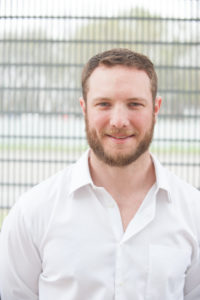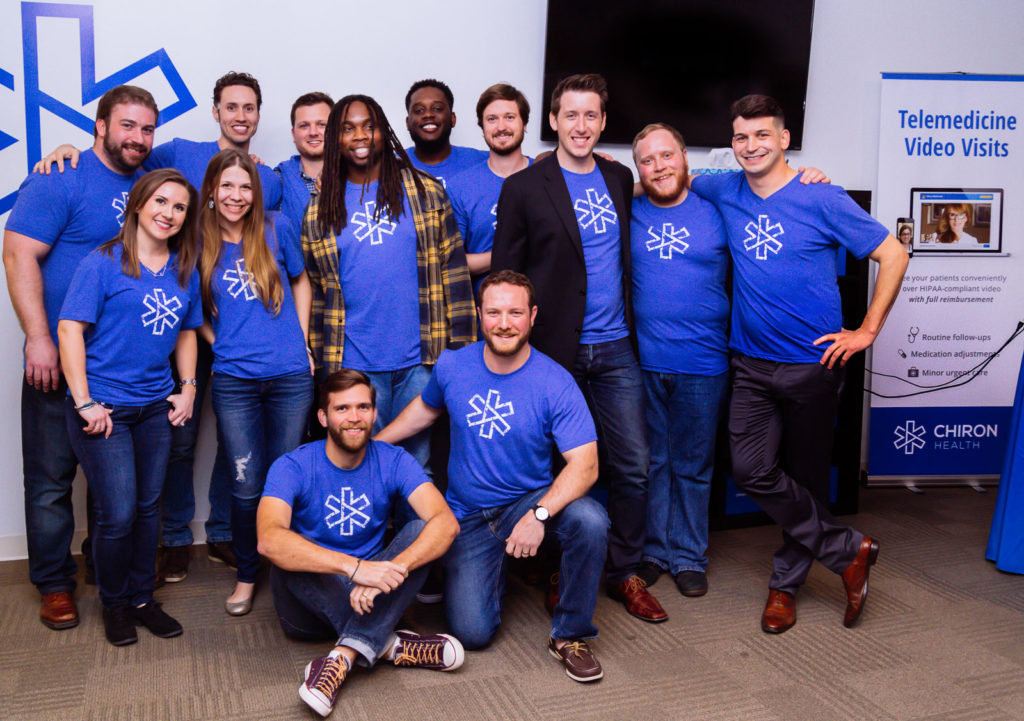By HOJUN CHOI
Reporter with Silicon Hills News

Charlie Kolb, co-founder of telemedicine startup Chiron Health, photo courtesy of the company
When Charlie Kolb, co-founder of telemedicine startup
Chiron Health, made the decision to enroll in classes for his master’s degree at the University of Texas at Austin, he did so with the dreams of one day starting his own company.
“I wasn’t interested in investment banking, or consulting,” Kolb said. “I was very focused on starting a company and I wanted to meet people who wanted to do the same.”
Kolb got significantly closer to achieving his dream when he met fellow classmate Andrew O’Hara, the founder and CEO of the Austin-based startup, who was looking to bring his experiences from the health information technology industry into the startup world.
O’Hara, who had worked as a stock analyst in Chicago, told Kolb about a gap in the telemedicine space, which had previously been bogged down by regulations that made it difficult for physicians to receive reimbursements for telemedicine services.
Though telemedicine companies like American Well and Teledoc were garnering positive buzz about their services, Kolb said O’Hara envisioned a service that would help doctors connect with their existing patients, rather than offering a platform that locates a physician for the customer.
“[O’Hara] said a bolt-on telemedicine solution that plugs right into the systems that are already installed in basically every doctor’s office in the country would be a good strategy,” Kolb said.
With their compass pointing North, Kolb and O’Hara began developing their venture.
In addition to taking graduate-level courses, the two-man team began putting together pitch decks and started their initial market research. With their concept in mind, Kolb and O’Hara participated in “3 Day Startup,” a workshop hosted by the Austin Technology Incubator.
“We had some phenomenal research on reimbursement and regulations -which are two big hurdles for practices when adopting telemedicine,” Kolb said.
Their vision caught the attention of fellow participants in the three-day workshop, which places individuals into teams and pairs them up with advisors who help teams conduct market research and develop business models.
The workshop became a launching point for Kolb and O’Hara, who now looked to develop a minimal viable product to pitch to investors. Shortly after the success at the workshop, O’Hara told Kolb that he would be leaving the master’s program -a decision that Kolb would later make himself.
“I think you can get some great experience from learning in a classroom, but it’s nothing compared to the hands on experience you get from building and operating your own company -so no regrets, really.” Kolb said.
By late 2013, Kolb and O’Hara had found a developer to create the first version of their telemedicine platform, and by the summer of 2014, Chiron Health had 12 customers using and paying for their platform.
“What we were selling fit into a viable economic model, and I think a big part of that was the fact that these were visits that they could get reimbursed for,” Kolb said.
Through their market research, Kolb’s team learned that doctors conduct a large volume of visits over the telephone on a daily basis, many times for post-hospital care for outpatients. Kolb said that though these services over the phone were frequent, doctors could not be reimbursed for the time they spent for these remote visits.
If these same visits were conducted over a video conference call, however, physicians are able to collect reimbursements for their treatment.
“Most physicians, regardless of where they are, are not aware there are laws that require that video visits be reimbursed,” Kolb said. “Doctors just think you can’t get paid for them, so a lot of our job on the sales side is educating and spreading awareness around those regulations.”
Kavita Radhakrishnan, a nursing professor at the University of Texas at Austin, specializes in telehealth, and has conducted research on the effects of telehealth on patients. She said the issue of reimbursement was a large barrier for many practices trying to adopt telemedicine technologies during her research.
“At that time, insurance companies were not reimbursing for telehealth, so their biggest selling point is probably the fact that they take care of the reimbursement,” Radhakrishnan said.
In the past, Radhakrishnan said that healthcare providers were also wary of the costs related with upgrades needed to maintain telemedicine platforms.
“Telemedicine definitely has value which is why being aware of some of the negative aspects and being prepared for that is really going to increase the value of telehealth,” Radhakrishnan said.
Dr. Adriana Guerra, who owns a family health practice in central Austin, said she has been using Chiron Health services for almost two years. She said the company’s platform has not run into any technical issues, and said the company’s costs have not been taxing on her practice.
“If there were any problems, they were on the patient side, and they were rare,” Guerra said.
Guerra said Chiron Health’s customer support service allows her patients to deal with any questions or problems they have with the software, and she had not received any complaints about the platform.
“If I feel like a patient is struggling with getting online or logging in, I can use the ‘help’ button to get in contact with the customer service team to reach out to the patient immediately,” Guerra said.
The company, which recently competed in “Google Demo Day” in May, has raised more than $3 million in funding. Kolb said that Capital Factory’s incubator program has greatly helped the company gain the momentum to attract more institutional funding.
And despite having received very few complaints about their telemedicine software, Kolb said the company looks to use the money to further streamline their platform.
“You can make a change on the product that directly impacts our ability to sell, or our ability to provide better customer support.” Kolb said. “We’re very comfortable with the foundations that are in place, so we feel like we can get the most leverage out of investing more in the product at this point.”

Chiron Health’s staff, photo courtesy of the company.
![]() TPG Capital, a private equity firm, announced Monday plans to buy San Marcos-based Grande Communications Networks for $650 million.
TPG Capital, a private equity firm, announced Monday plans to buy San Marcos-based Grande Communications Networks for $650 million.
